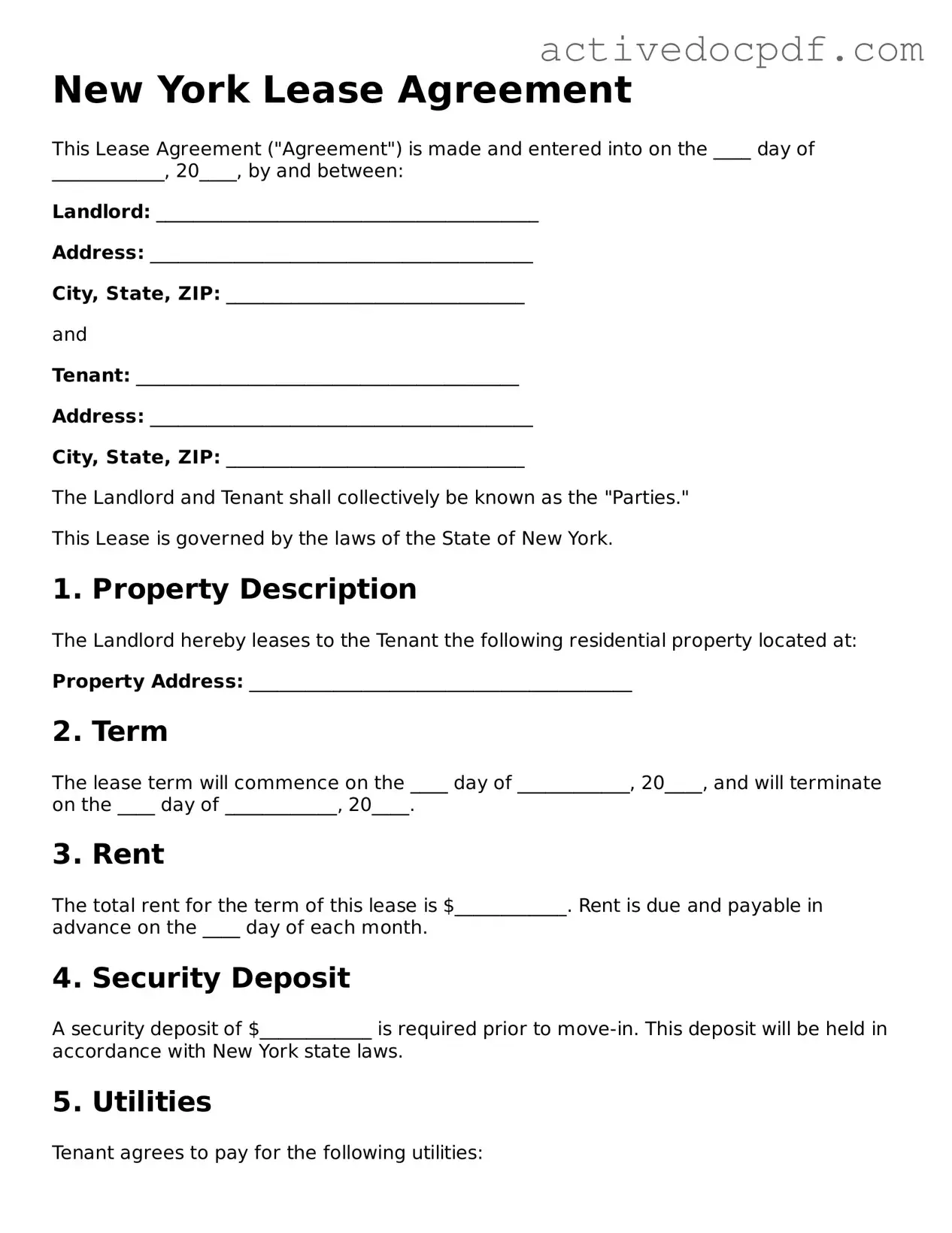What is a New York Lease Agreement?
A New York Lease Agreement is a legal document that outlines the terms and conditions between a landlord and a tenant regarding the rental of residential or commercial property in New York. This agreement specifies details such as the duration of the lease, rental amount, security deposit, and responsibilities of both parties.
What key elements should be included in a New York Lease Agreement?
Essential elements of a New York Lease Agreement include:
-
The names of the landlord and tenant.
-
The address of the rental property.
-
The duration of the lease (start and end dates).
-
The amount of rent and payment due dates.
-
Details about the security deposit.
-
Responsibilities for maintenance and repairs.
-
Rules regarding pets, smoking, and subletting.
Is a written lease required in New York?
While verbal agreements can be legally binding, a written lease is highly recommended. A written document provides clarity and protection for both landlords and tenants. In New York, leases longer than one year must be in writing to be enforceable.
What is the typical duration of a lease in New York?
Lease durations can vary widely, but common terms include:
-
One year (12 months)
-
Month-to-month agreements
-
Short-term leases (less than one year)
Each option has its advantages, depending on the needs of the landlord and tenant.
What are the tenant's rights in a New York Lease Agreement?
Tenants in New York have several important rights, including:
-
The right to a habitable living space.
-
The right to privacy, meaning landlords must provide notice before entering the property.
-
The right to a return of the security deposit, subject to certain conditions.
-
The right to be free from discrimination.
Understanding these rights can empower tenants and help them navigate their rental experience more effectively.
Can a landlord increase rent during a lease term?
Generally, a landlord cannot increase rent during the term of a lease unless the lease specifically allows for it. However, once the lease expires, landlords may adjust the rent for a new lease agreement. In rent-stabilized units, there are specific regulations governing rent increases.
What happens if a tenant wants to break the lease early?
If a tenant wishes to break the lease early, they should first review the lease terms. Many agreements include a clause regarding early termination. If no such clause exists, tenants may be responsible for paying rent until the lease ends or until a new tenant is found. Communication with the landlord is crucial in these situations.
What is a security deposit, and how is it handled in New York?
A security deposit is a sum of money collected by the landlord to cover potential damages or unpaid rent. In New York, the maximum amount a landlord can charge is one month's rent. Landlords must keep the deposit in a separate bank account and provide tenants with written notice of where the deposit is held. Upon lease termination, landlords must return the deposit within a specific timeframe, minus any lawful deductions.
Are there any specific laws governing lease agreements in New York?
Yes, New York has several laws that govern lease agreements, including the New York State Real Property Law and local rent control or rent stabilization laws. These laws protect tenants' rights and outline the responsibilities of landlords. It is advisable for both parties to familiarize themselves with these regulations to ensure compliance.
What should I do if I have a dispute regarding my lease?
In the event of a dispute, it is recommended to first communicate directly with the other party to seek a resolution. If that does not work, mediation services may be available. If the issue remains unresolved, legal action may be considered. Consulting with a legal professional who specializes in landlord-tenant law can provide guidance tailored to your specific situation.
